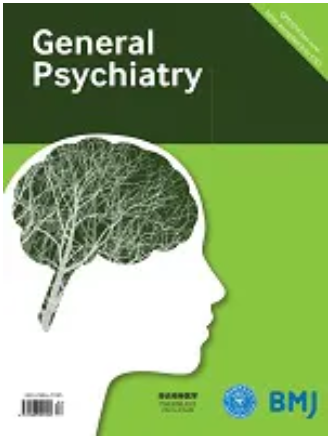Uncovering potential distinctive acoustic features of healing music
IF 5.3
3区 医学
Q1 PSYCHIATRY
引用次数: 0
Abstract
Background Music therapy is a promising complementary intervention for addressing various mental health conditions. Despite evidence of the beneficial effects of music, the acoustic features that make music effective in therapeutic contexts remain elusive. Aims This study aimed to identify and validate distinctive acoustic features of healing music. Methods We constructed a healing music dataset (HMD) based on nominations from related professionals and extracted 370 acoustic features. Healing-distinctive acoustic features were identified as those that were (1) independent from genre within the HMD, (2) significantly different from music pieces in a classical music dataset (CMD) and (3) similar to pieces in a five-element music dataset (FEMD). We validated the identified features by comparing jazz pieces in the HMD with a jazz music dataset (JMD). We also examined the emotional properties of the features in a Chinese affective music system (CAMS). Results The HMD comprised 165 pieces. Among all the acoustic features, 74.59% shared commonalities across genres, and 26.22% significantly differed between the HMD classical pieces and the CMD. The equivalence test showed that the HMD and FEMD did not differ significantly in 9.46% of the features. The potential healing-distinctive acoustic features were identified as the standard deviation of the roughness, mean and period entropy of the third coefficient of the mel-frequency cepstral coefficients. In a three-dimensional space defined by these features, HMD’s jazz pieces could be distinguished from those of the JMD. These three features could significantly predict both subjective valence and arousal ratings in the CAMS. Conclusions The distinctive acoustic features of healing music that have been identified and validated in this study have implications for the development of artificial intelligence models for identifying therapeutic music, particularly in contexts where access to professional expertise may be limited. This study contributes to the growing body of research exploring the potential of digital technologies for healthcare interventions. All data relevant to the study are included in the article or uploaded as supplementary information.发现治疗音乐潜在的独特声学特征
背景 音乐疗法是一种很有前景的辅助干预措施,可用于治疗各种精神疾病。尽管有证据表明音乐具有有益的作用,但使音乐在治疗环境中有效的声学特征仍然难以捉摸。目的 本研究旨在识别和验证治疗音乐的独特声学特征。方法 我们根据相关专业人士的提名构建了治疗音乐数据集(HMD),并提取了 370 个声学特征。疗愈音乐的声学特征被识别为:(1)独立于 HMD 中的流派;(2)与古典音乐数据集(CMD)中的音乐作品显著不同;(3)与五元素音乐数据集(FEMD)中的音乐作品相似。我们将 HMD 中的爵士乐作品与爵士乐数据集 (JMD) 中的作品进行了比较,从而验证了所识别的特征。我们还在中国情感音乐系统(CAMS)中检验了这些特征的情感属性。结果 HMD 包含 165 首乐曲。在所有声学特征中,74.59%的特征在不同流派之间具有共性,26.22%的特征在 HMD 经典曲目和 CMD 之间存在显著差异。等效测试表明,HMD 和 FEMD 在 9.46% 的特征上没有明显差异。潜在的治疗性声学特征被确定为粗糙度的标准偏差、mel-frequency cepstral coefficients 第三系数的平均值和周期熵。在由这些特征定义的三维空间中,HMD 的爵士乐作品可以与 JMD 的作品区分开来。这三个特征可明显预测 CAMS 中的主观情绪和唤醒评分。结论 本研究发现并验证了治疗音乐的独特声学特征,这对开发人工智能模型识别治疗音乐具有重要意义,尤其是在专业知识有限的情况下。这项研究为越来越多的探索数字技术在医疗保健干预方面的潜力的研究做出了贡献。与该研究相关的所有数据均包含在文章中或作为补充信息上传。
本文章由计算机程序翻译,如有差异,请以英文原文为准。
求助全文
约1分钟内获得全文
求助全文
来源期刊

General Psychiatry
医学-精神病学
CiteScore
21.90
自引率
2.50%
发文量
848
期刊介绍:
General Psychiatry (GPSYCH), an open-access journal established in 1959, has been a pioneer in disseminating leading psychiatry research. Addressing a global audience of psychiatrists and mental health professionals, the journal covers diverse topics and publishes original research, systematic reviews, meta-analyses, forums on topical issues, case reports, research methods in psychiatry, and a distinctive section on 'Biostatistics in Psychiatry'. The scope includes original articles on basic research, clinical research, community-based studies, and ecological studies, encompassing a broad spectrum of psychiatric interests.
 求助内容:
求助内容: 应助结果提醒方式:
应助结果提醒方式:


